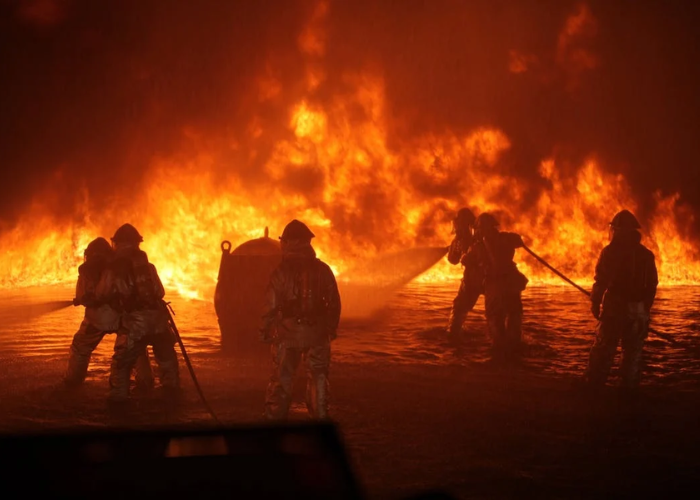The US has been having to deal with wildfires regularly for the past few years. Recently, however, the situation with these fires has only worsened.
According to The Guardian, the recent Hawaii wildfires have killed at least 93 people so far. Experts are calling it the deadliest US blaze in a century. Apart from taking lives, the fire has also burned hundreds of houses to ashes, displacing many from their homes.
Data from the US Environmental Protection Agency (EPA) shows that the country sees an average of around 70,000 wildfires every year. Some of these wildfires are more intense and damaging than others. Whatever the severity of these flames, it’s always up to firefighters to deal with them. For that, these brave souls always have to be ready to handle the situation. At the same time, they also need to keep themselves safe.
In this article, we’ll highlight a few safety tips that firefighters have to adhere to when dealing with wildfires.
Prioritize Situational Awareness
Situational awareness is the foundation of firefighter safety during wildfire operations. Before engaging in firefighting activities, it’s crucial to gather as much information as possible about the wildfire’s behavior. It’s also necessary to understand the weather conditions, topography, and any potential changes in wind patterns. This information enables firefighters to develop a comprehensive strategy and adapt their tactics to the evolving situation.
Modern technology has revolutionized situational awareness for firefighters. Drones equipped with infrared cameras can provide real-time data on fire spread and intensity, while weather stations offer accurate updates on wind speed and direction. Utilizing these tools helps firefighters make informed decisions that can mean the difference between a controlled burn and a dangerous situation.
Maintain Effective Communication
Effective communication is the backbone of any firefighting operation, especially during chaotic and fast-changing wildfire scenarios. Firefighters need to establish clear channels of communication both within their own team and with other responding agencies. Radios, satellite phones, and even smartphone apps designed for emergency responders facilitate seamless information sharing.
Regular check-ins and updates are essential to keep everyone on the same page. Firefighters should also be trained in using standardized communication protocols to avoid misunderstandings and confusion during high-stress situations.
Proper Personal Protective Equipment (PPE) Usage
Firefighters facing wildfires must wear appropriate PPE to shield themselves from extreme heat, flames, smoke, and potential falling debris. PPE includes flame-resistant clothing, gloves, helmets, and fire-resistant boots. It’s not only important to have the right gear, but it’s also crucial to wear it correctly and ensure it fits properly.
Respiratory protection is particularly vital when dealing with wildfire smoke, which can contain hazardous particulate matter and toxic gasses. N95 masks or powered air-purifying respirators (PAPRs) are commonly used to filter out harmful airborne particles. Firefighters should be regularly trained in how to properly don and doff their PPE to minimize the risk of contamination.
Safe Fire Extinguishing Foam
Last year, it was brought to public attention that toxic chemicals used to manufacture aqueous film-forming foam (AFFF firefighting foam) can cause cancer. TorHoerman Law reported that firefighters who use this type of foam are at risk of cancer and other health issues. This eventually led to the AFFF lawsuit, where the AFFF firefighting foam victims are taking legal action to seek compensation for their losses.
As per the latest AFFF lawsuit update, the manufacturing companies will switch to non-toxic chemicals for their foam production. However, they are looking to settle with the victims as the case is still ongoing.
Firefighters who deal with wildfires must also be careful regarding their choice of foam. By no means should they opt for something that’s hazardous to their own health. If needed, they must alert their superiors should they find anything wrong with their existing foams. Toxic foam, no matter how effective in combating fires, should not be used at the cost of the firefighting personnel’s health.
Establish Escape Routes and Safety Zones
In the unpredictable environment of a wildfire, having well-defined escape routes and safety zones is a matter of life and death. Firefighters should be constantly aware of their surroundings and identify multiple routes they can use to retreat to a safer area if the fire becomes dangerous. These routes should be communicated and known to the entire team.
Safety zones are predetermined areas that offer protection from the immediate threat of fire. These zones are clear of vegetation and provide a safe space in case the fire rapidly advances. Firefighters should always position themselves in a way that allows them quick access to an escape route and a safety zone.
Stay Hydrated and Manage Fatigue
Wildfire operations are physically and mentally demanding. Firefighters often work long hours in high temperatures, which can lead to dehydration and exhaustion. Staying hydrated is crucial to maintaining focus and stamina during firefighting efforts. Regular water breaks should be integrated into the operational plan, and firefighters should be encouraged to drink fluids frequently.
Managing fatigue is also essential to prevent errors and accidents. Extended firefighting shifts can lead to reduced cognitive function and slower reaction times. Firefighters should rotate tasks to distribute the physical and mental workload, and supervisors should monitor their teams for signs of exhaustion.
Conclusion
According to the Bellaire City Council website, around 100 firefighters in the US die every year in duty-related incidents. Many of these deaths take place when they’re dealing with wildfires. Thus comes the need for firefighters to stay extra vigilant when handling wildfires. For that, they must stick to the above-discussed points and protect themselves accordingly.








Leave a Comment